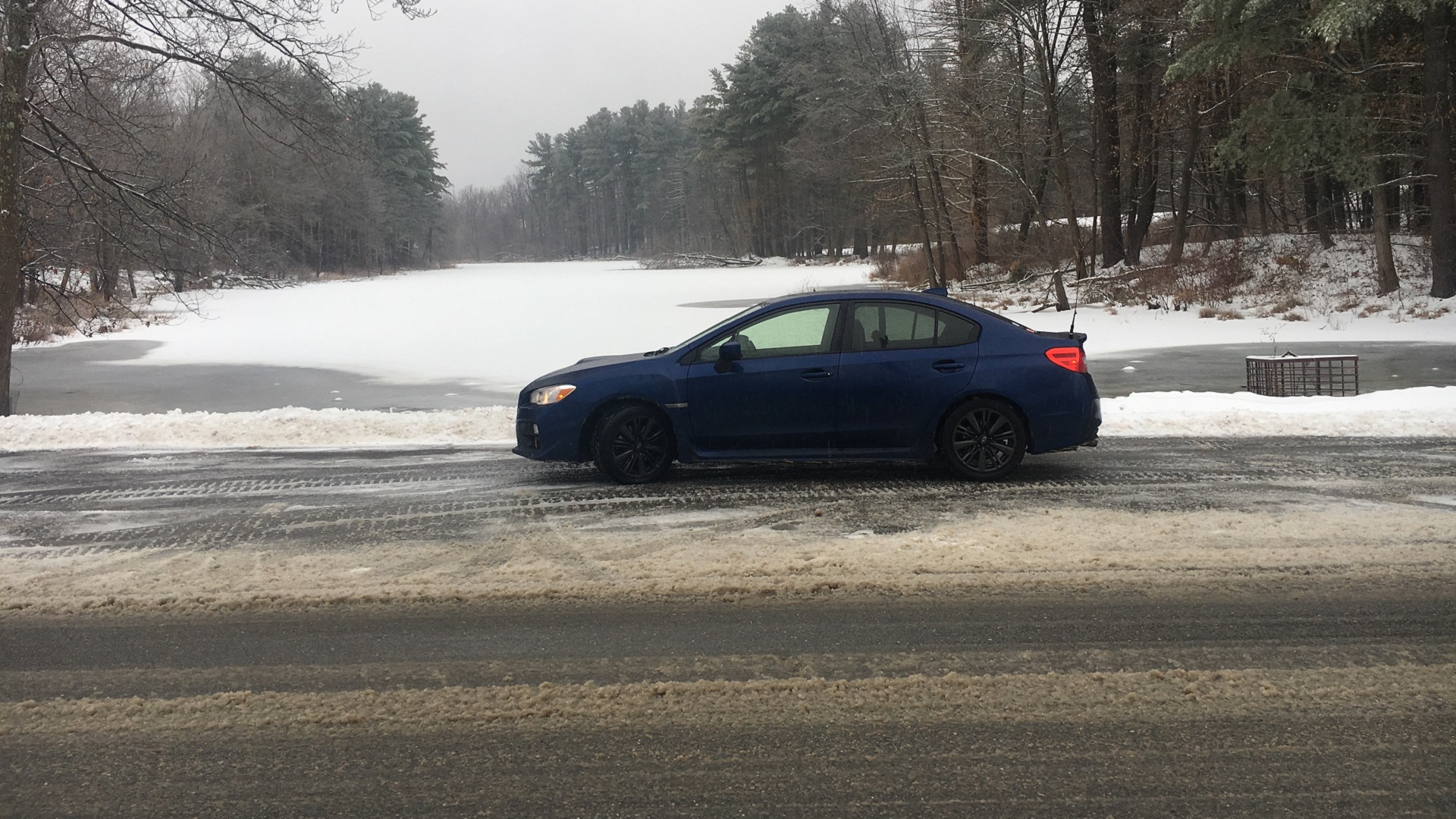

We may earn revenue from the products available on this page and participate in affiliate programs. Learn more ›
An arctic blast has engulfed much of the U.S. in bitterly cold temperatures this week. This will expose certain weaknesses in your car and cause some problems. Here are seven things to check and stay on top of to make sure your car will handle the cold as if it was just another day.
Check your tires. Make sure you have enough tread to dig into snow on the road instead of sliding across the top of it. Winter tires have tread and compound optimized for these conditions and are a worthwhile investment. Also, check your tire pressures. Colder air is denser than warm air and takes up less space inside your tire, reducing the pressure. A few weeks ago my Subaru WRX threw me a tire pressure warning, so I checked them immediately. My right front tire was down to 26 pounds per square inch from the recommended 33. Though not a critical failure, but definitely worth pumping up to spec—before you get a warning like I did.
Check your battery and its terminals. A colder engine is more difficult to crank over, and batteries aren’t as powerful when they get cold. This double whammy means that you might not be able to start your engine on a particularly cold morning, even though you could the day before. As temperatures dropped in late November I noticed my WRX wasn’t cranking my engine as quickly as it used to. It still started, but with some difficulty, and I began carrying my booster pack with me (always a good idea in winter). The cure was to replace my battery, even though my original one was only three years old. The engine cranks faster and has no trouble starting now. While you’re at it, check your battery terminals for corrosion and clean them if necessary. Corroded terminals can cause a poor contact between the battery and the wires leading to the rest of the car, resulting in a poor transfer of electrical power.
Check your oil. Not only to make sure the level is correct but also check your owners manual to see if you need to switch to a different viscosity of oil for colder temperatures. Older cars, such as my 1983 BMW 320i, required 20W-50 in the summer but 10W-40 in winter to keep it flowing smoothly. Modern cars typically use low viscosity oil year round that doesn’t need to be changed. My WRX is happy with 5W-30 at any temperature we are likely to ever see.
As a side note, after you start your car don’t rev the engine too much until the oil has warmed up. Cold oil doesn’t lubricate as well as warm oil, and high RPMs with cold oil can hurt the engine.
Check your coolant. Race cars often use nothing more than water in their cooling systems, both for easy cleanup in case of a crash and because track races don’t typically happen in temperatures below freezing. For the rest of us, antifreeze is required to keep our cooling systems from freezing up in the cold. Make sure not only that your cooling system is full, but also that the antifreeze is fresh and up to the task of remaining in liquid form in cold temperatures. Old coolant loses its ability to do this.
Check your wiper blades. It helps to see where you’re going, and winter is particularly rough on wipers. Cold makes the rubber more brittle, and snow and ice are more difficult to clear than water. Just before the first snow we had this year, half of the driver’s wiper blade tore off my wife’s Ford Flex. She refused to drive it until I went to the store and replaced her wiper blades, and rightfully so. It wouldn’t have been safe to drive in the snow if she couldn’t clear it from in front of her face.
Use winter washer fluid. Related to this, regular blue wiper fluid tends to freeze in cold temperatures, not only rendering it useless when you need it most but making visibility worse rather than better when it freezes to your windshield. Use washer fluid designed for winter that will refuse to freeze in the cold. I like Rain-X washer fluid because it simultaneously applies a layer of Rain-X to the windshield while you wash it with no work required.
Clear snow completely off your car. Not just the windows, but your hood, trunk, and roof as well. I don’t care how tall your SUV is, just do it. It may not specifically keep you safe, but it will keep everyone else on the road around you safe from snow and ice flying off of your car and smashing into theirs. I’ve seen ice fly off cars and shatter windshields, or nearly cause crashes when people swerve to avoid it. It’s also required by law in many areas.
What tips and tricks do you use to keep your car going through the winter? Do you carry a tow rope, blankets, or food rations? Let us know in the comments.